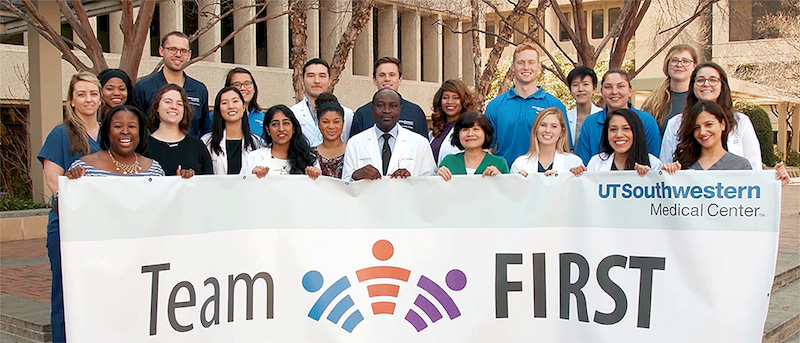Team FIRST

This proposal for the UT Southwestern Medical Center is named “Team FIRST.” The name underscores the importance of teams in health care by implicitly accepting that humans can and will err, yet teams can be flawless. Further, it emphasizes the essential conditions needed for safe, effective, team-based communication during handovers in the clinical arena:
- Face-to-face Feedback
- Inter-professional and Interactive
- Reliability and Resiliency
- Safe climate for Synthesis
- Team Training
The Team FIRST approach is innovative in several dimensions.
- It is driven by and for students. The Office of Quality, Safety and Outcomes Education in conjunction with the Office of Undergraduate Education has already engaged more than 20 students in scholarly activities related to team-based care during handovers.
- Team FIRST provides an opportunity for student and faculty development, leadership, and scholarship by creating teams with complementary skills within each of its major components.
- Its conceptual framework provides a model for discovery and generation of generalizable knowledge.
- Its design and execution are built on the foundations of teams, implementation, and safety science.
- Its successful execution has the potential to produce national and international leaders in simulation-based education, patient safety, and quality improvement.
Developing team-based communication and care coordination is key to reducing preventable harm and creating joy-in-work for medical teams. The inclusion of experts in organizational psychology and human factors and ergonomics provides us with the tools that have been so successful in other high-reliability industries, like aviation. Team FIRST uses the most ubiquitous teaming events in health care to teach and reinforce behaviors critical to teamwork, like honesty, discipline, humility, curiosity, and creativity.
These educational experiences will build a foundation for learners to apply these skills upon graduation for exchanging information and responsibility for a wide range of care transfer and handover within and between hospitals. Learners are also encouraged to serve as leaders and change agents in the national effort to address communication failures – the leading cause of harm in health care. We believe this plan leverages the strengths of our academic medical center by making the teaching and learning of team-based communication a priority for academic and health system affairs at our institution.
